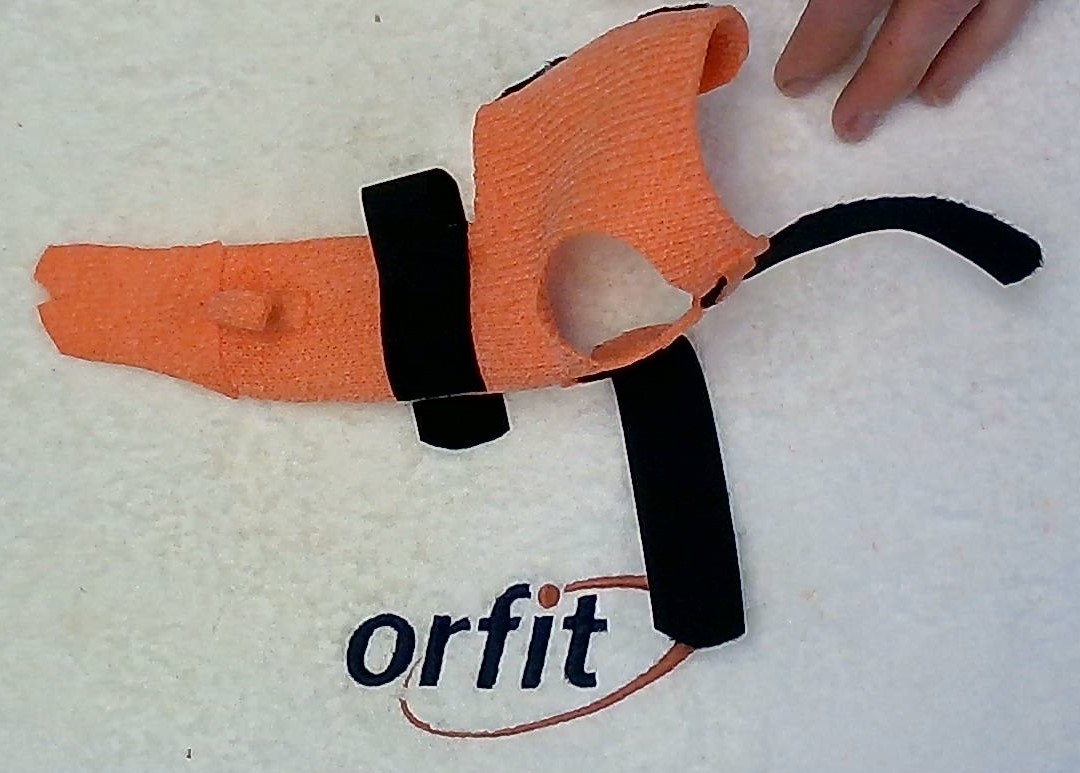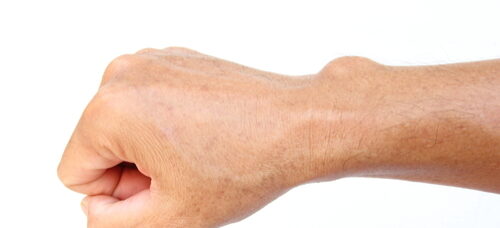
Skin Traction and Orthotic Interventions
for Complex PIP Joint Fractures

Traction orthosis base
Finger fractures can be difficult to treat for physicians and therapists. Lengthy immobilization can lead to increased stiffness, pain, deformities, and loss of full range of motion. Intra-articular joint fractures of the Proximal Interphalangeal (PIP) joint are especially challenging as this involves disruption of the joint articular surface. Treatment is geared at achieving stable reduction of bony fragments, restoring joint stability, edema management and initiating early range of motion. Treatment options to consider may include immobilization in a cast or orthosis, open reduction and internal fixation, joint arthroplasty or treatment with a traction device.
Exploring Traction Devices
Traction devices are based on the concept of capsule-ligamentotaxis, where traction forces are applied to capsular and peri-articular soft tissues to maintain fracture reduction, restore joint space, and regain functional motion. A scoping review by Packham et al (2016) reviewed the evidence for traction orthoses in the management of intra-articular fractures. The authors classified their review of devices into three categories:
- Static traction: surgical application of an external fixator using static traction or static traction using a K-wire, skin traction, or nail traction in combination with an orthosis or cast
- Dynamic external fixation: surgical application of an external fixator using dynamic traction with rubber bands, a spring component, K-wires, or a commercial fixator
- Dynamic traction using a K-wire or skin traction and custom orthosis or cast
Historical Perspective
It is of interest to note that the use of traction for these types of injuries was described as early as 1919. The first dynamic traction orthosis was the rounded or arcuate orthosis discussed by Schenck in 1986 and later described in an article by Dennys et al (1992) in the Journal of Hand Therapy. There are many additional articles and designs for a wide variety of orthoses utilizing traction as an intervention for intra-articular joint fractures.
Addressing Complications
Complications from external fixators or K wires include pain, swelling, pin-site infections or adhesions involving the gliding of tendon. In order to avoid these complications, clinicians have been applying skin traction to the distal portion of the finger, a non- invasive intervention method.
Recent Study Findings
Method
A recently published study by Yang et al (2024) reviewed a cohort of 14 patients seen with proximal or middle phalangeal fractures treated with non-invasive skin traction and orthotic intervention. Four of the patients received a forearm- based volar orthosis and ten patients received a hand- based orthosis. All orthoses included a pan shaped for the injured finger and included an adjacent finger in the orthotic design. Skin traction was secured with two strips of non-extensile tape placed on the dorsal/volar aspect of the injured finger and secured by a few circumferential strips of the same tape. The ends of the tape were twisted together at the distal end of the finger and pulled over the edge of the pan orthosis with traction and secured on the underside. The patients in the study were seen weekly where the tape was removed, skin checks were performed, the tape was replaced, and traction reapplied. The average length of wear of the traction orthosis was 15 days or until the fracture site was clinically non-tender.
Results
All patients had significantly increased total active motion (TAM) from initial median TAM of 124° to final median TAM of 245°. Normal TAM is considered to be 260°. All patients also showed satisfactory bone healing with no non unions or malunions.
Comparative Analysis
There was no real difference between the use of a forearm -based orthosis to the use of a hand -based orthosis except for a slightly shorter duration time with the use of a hand-based orthosis.
The authors of this retrospective study found that a skin traction orthosis could be a low cost, non-invasive, simple, and quick option for conservative management of complex finger fractures.
I am positive we will begin to see many more designs for skin traction orthoses in the future.

Side view of orthosis

Elastic thread strectched over hook

Dorsal view of orthosis
References
Dennys, L. J., Hurst, L. N., & Cox, J. (1992). Management of proximal interphalangeal joint fractures using a new dynamic traction splint and early active movement. Journal of Hand Therapy, 5(1), 16-24.
Kamnerdnakta, S., Huetteman, H. E., & Chung, K. C. (2018). Complications of proximal interphalangeal joint injuries: prevention and treatment. Hand clinics, 34(2), 267-288.
Packham, T. L., Ball, P. D., MacDermid, J. C., Bain, J. R., & DalCin, A. (2016). A scoping review of applications and outcomes of traction orthoses and constructs for the management of intra-articular fractures and fracture dislocations in the hand. Journal of Hand Therapy, 29(3), 246-268.
![]()

Writer: Debby Schwartz, OTD, OTR/L, CHT
Physical Rehabilitation Product and Educational Specialist at Orfit Industries America.
Debby is a certified hand therapist with over 36 years of clinical experience. She completed her Doctorate of Occupational Therapy at Rocky Mountain University of Health Professions in 2010. She has worked at Orfit Industries America as Product and Educational Specialist since 2007.
Debby is also an adjunct professor at the Occupational Therapy Department of Touro University, School of Health Sciences, and at the Occupational Therapy Department at Yeshiva University, Katz School of Science and Health in NYC. She has written many book chapters in the field of hand therapy and multiple articles for hand therapy journals, including the ASHT Times and the Journal of Hand Therapy. She has published a new textbook on orthotic fabrication together with Dr. Katherine Schofield, entitled “Orthotic Design and Fabrication for the Upper Extremity: A Practical Guide”.
![]()
If you’d like to receive the latest product updates and interesting Orfit news, subscribe to our newsletter:



